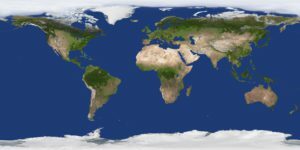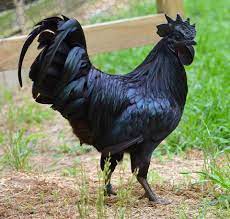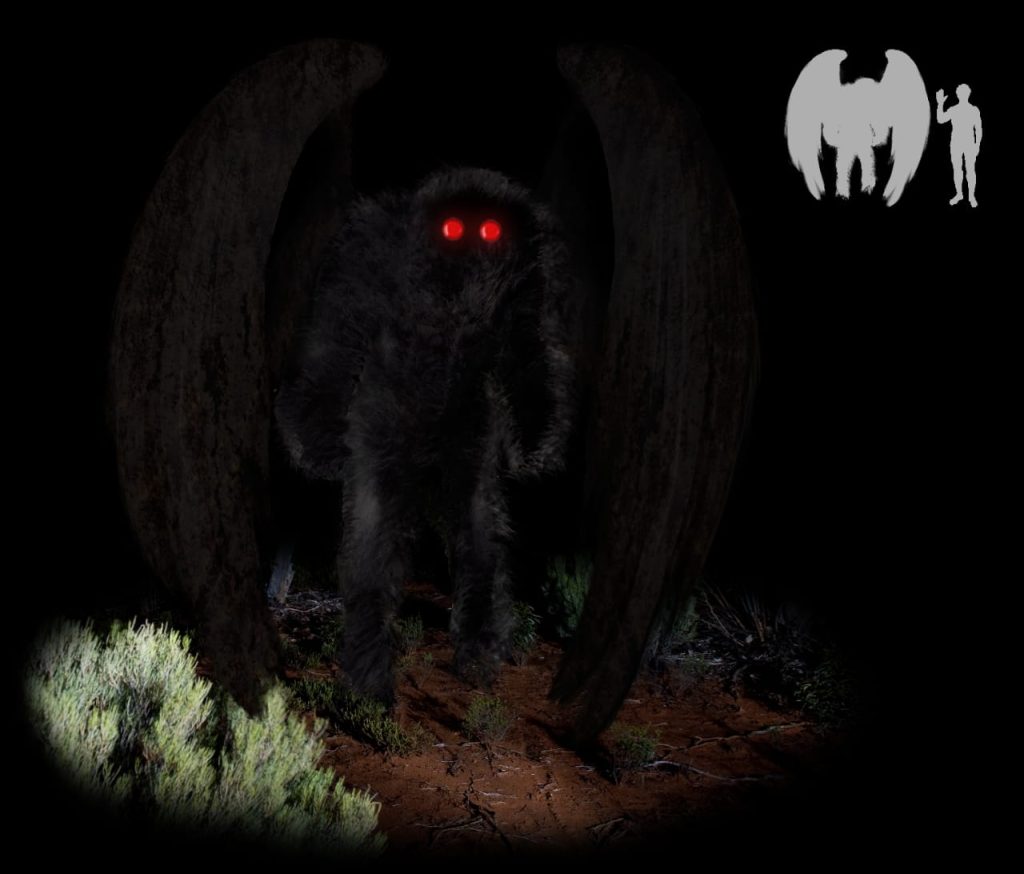Whales are one of the most fascinating creatures that live on planet Earth. Furthermore, their huge bodies and the way they live are really interesting. This creature is an aquatic mammal that has various fascinating features to it that impresses humankind to the core. Therefore, Podium brings you a complete guide to the biggest whales and their characteristics.

What is a Whale?
Whales may be found in every ocean on the planet, communicating with intricate and fascinating noises. Moreover, the blue whale can grow to be more than 100 feet long and weigh up to 200 tonnes, which is equivalent to 33 elephants.
Whales breathe air even though they live in the sea. In addition, they are protected from the cold ocean waters by a thick layer of fat called blubber. Furthermore, whales which include blue, right, bowhead, sei, and grey whales, are classified as baleen whales. This is because they have specific bristle-like structures (called baleen) in their mouths that strain food from the water. Meanwhile, other whales have teeth, such as beluga and sperm whales. Interestingly, whales are warm-blooded mammals who nurse their young, just like humans.
Biggest Whale Species
Whales, the world’s largest marine mammals, are an amazing assortment of creatures that have enthralled experts and spectators for thousands of years. Furthermore, whales are associated with ancient societies, have played critical roles in the creation of entire nations, and are among the world’s most sought-after species. Humans have always been drawn to the largest of these incredible creatures, although whales exist in a variety of sizes. To understand more, let us look at the top 10 largest species of whales on the planet.
Blue Whale (98 feet / 30 meters)
The blue whale is not only the world’s largest whale species but also the world’s largest known animal. Moreover, they can reach a maximum length of 98 feet (30 metres) and can weigh up to 173 tonnes. In addition, as their name suggests, Blue whales are dark blue in appearance with a paler underside. Commercial whaling dramatically reduced the population of blue whales, although they still exist in the North Atlantic, North Pacific, and parts of the Southern Hemisphere today.
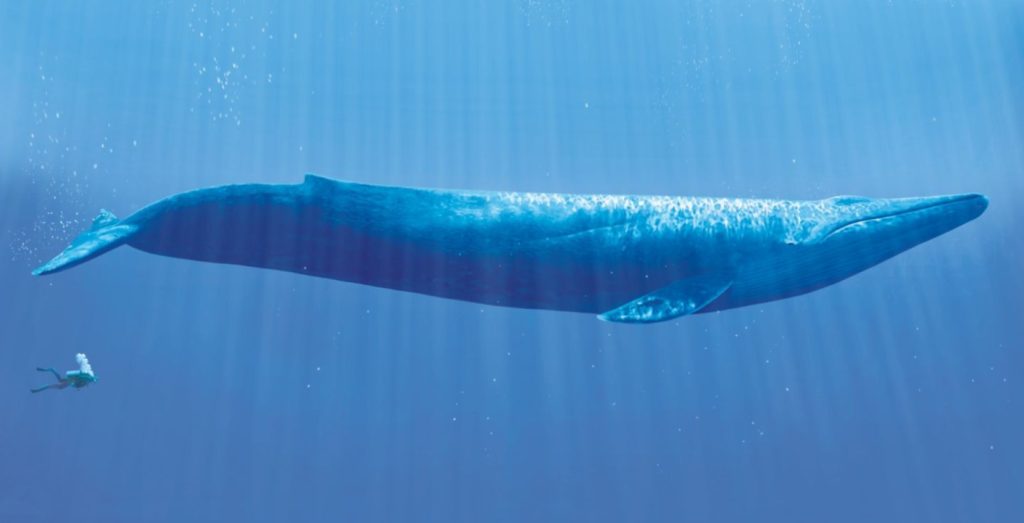
Fin Whale (90 feet / 27.5 meters)
The fin whale, also known as the razorback whale or common rorqual, is the world’s second-largest whale species. With a dark brown body and a white bottom, the fin whale is long and thin. Fin whales can be found from the Arctic to the Pacific regions, but they prefer to mate in warmer seas. With a single breath, fin whales may dive up to 1,500 feet below sea level. These whales can grow to be approximately 90 feet (27.5 metres) long, with a maximum weight of 72 tonnes due to their thinner shape.
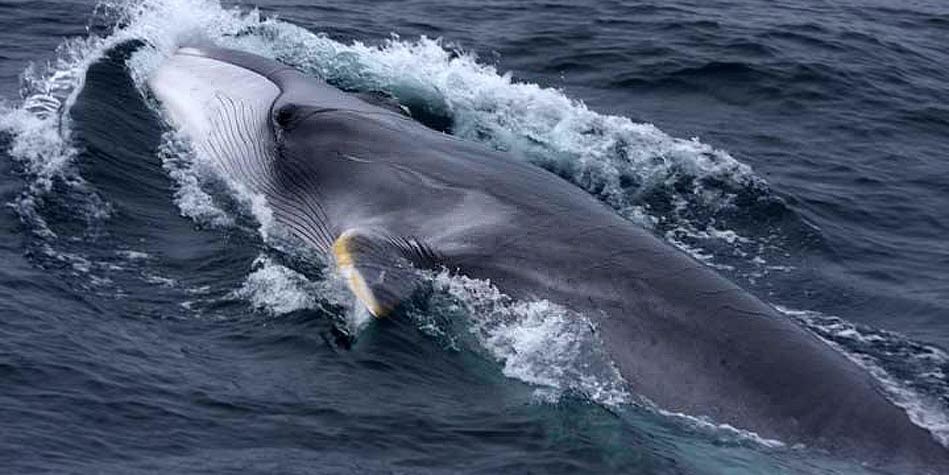
Sperm Whale (67 feet / 20.5 meters)
The sperm whale is the largest of the toothed whales, and one of the few whale species that can live in a variety of conditions and therefore, it may be found in oceans all around the world. Interestingly, male sperm whales are solitary animals except during mating season, whereas females move and live in groups. Sperm whales have a maximum length of 67 feet (20.5 metres), with males weighing up to 56 tonnes. However, because the largest whales were targeted by whale hunters in the past, the general size of these whales have reduced over time.
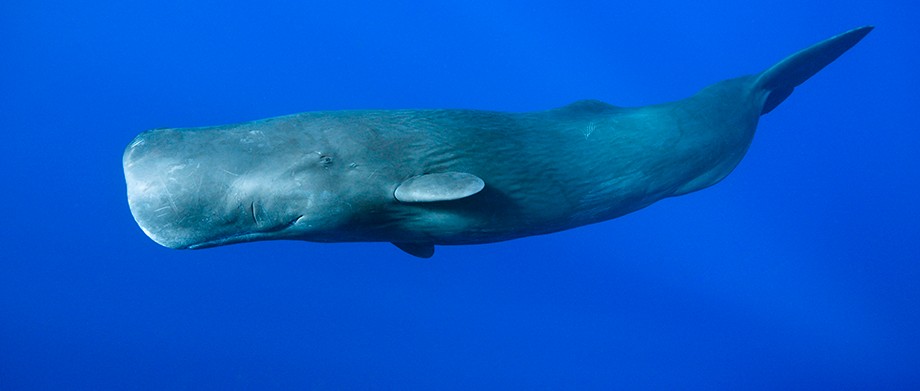
Right Whale (60 feet / 18.3 meters)
The North Atlantic right whale, the Southern right whale, and the North Pacific right whale are three extremely similar species of whales that are collectively known as the right whale. Furthermore, these whales are distinguished by their spherical bodies, V-shaped blowholes, and extremely dark skin. Whalers especially pointed them out as the “perfect” whale to collect plenty of meat and blubber from, thus, earning them the name. Moreover, a typical right whale can reach a length of 60 feet (18 metres) and weigh up to, or perhaps slightly more than, 100 tonnes.
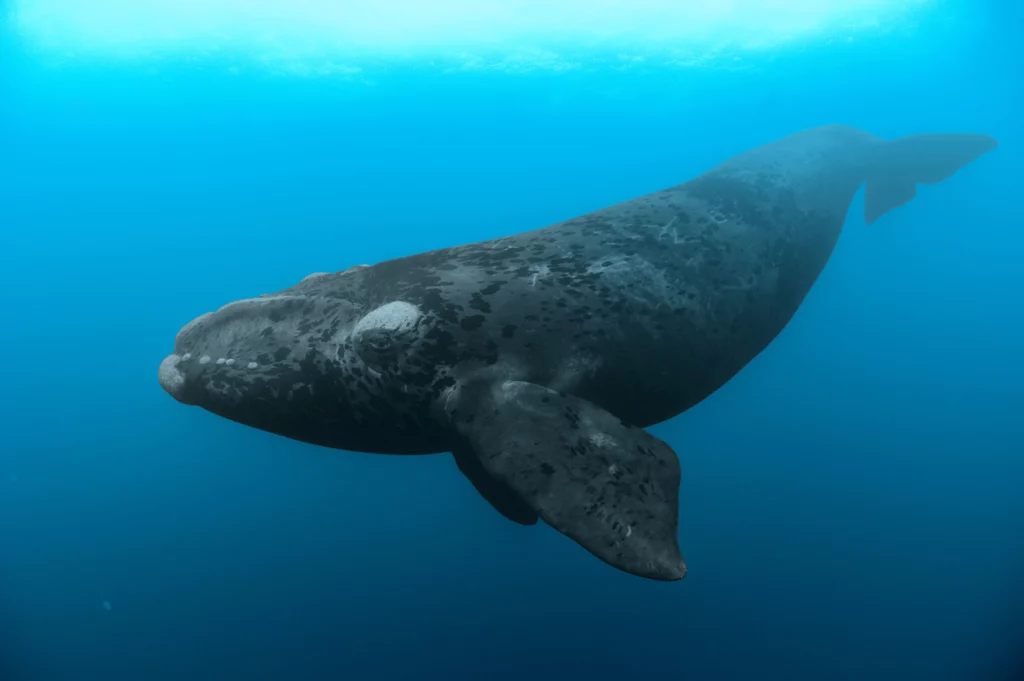
Bowhead Whale (59 feet / 18 meters)
The bowhead whale is a unique species for a variety of reasons, including the absence of a dorsal fin as well as the widest mouth, a key feature of any whale. Bowhead whales can grow to be 59 feet (18 metres) long and live in the icy waters of the Arctic and Subarctic. Their size, on the other hand, is even more remarkable, with some males weighing over 100 tonnes.
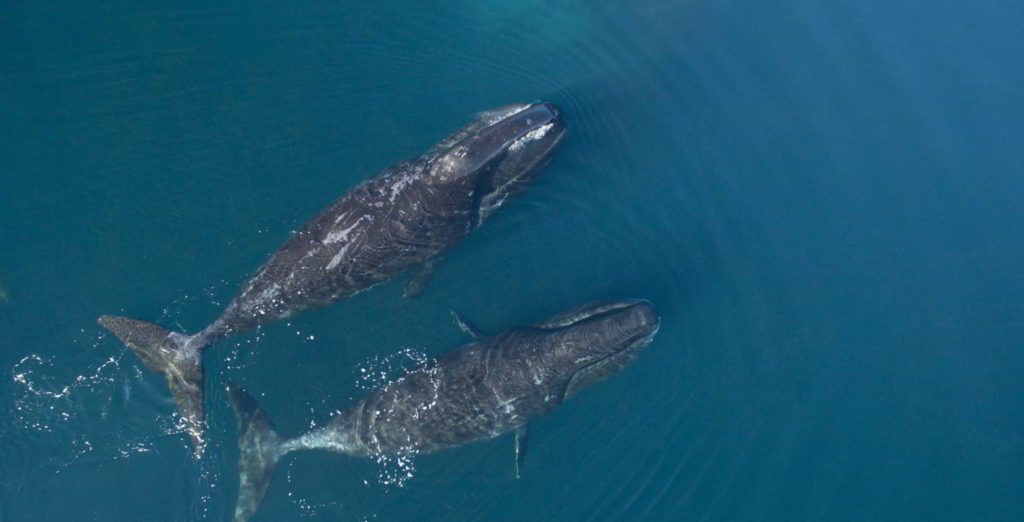
Humpback Whale (52 feet / 16 meters)
The humpback whale is one of the most identifiable whale species on the planet, thanks to its distinctive head shape and long pectoral fins. Humpback whales are also more likely than other species to breach and spend a lot of time near the water’s surface. Thus, it is easier to see and photograph these whales above water. Moreover, humpback whales are migratory, giving birth in the winter and relying on fat reserves to get them through the journey. However, this is a simple task for the huge humpback whales as they can weigh up to 30 tonnes at maturity.
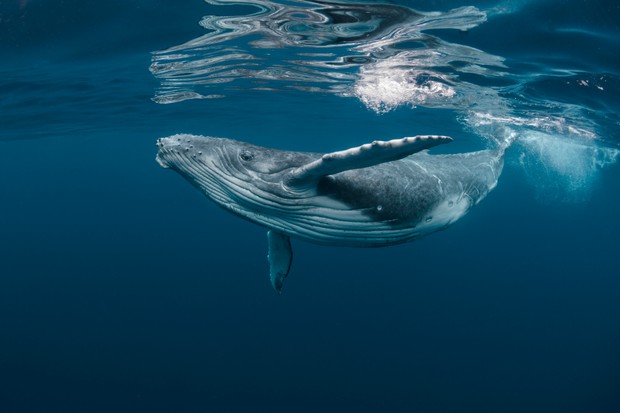
Sei Whale (52 feet / 16 meters)
The sei whale is a baleen whale similar to the minke whale, although it can grow to be considerably larger. By the time it reaches maturity, sei whales can easily exceed 50 feet in length and weighs up to 28 tonnes. The dark grey tint and irregular white markings on the front of the body are the notable traits of the sei whale. Furthermore, it also has a slightly arched rostrum, which is one of the few distinguishing features between it and the Bryde’s whale.
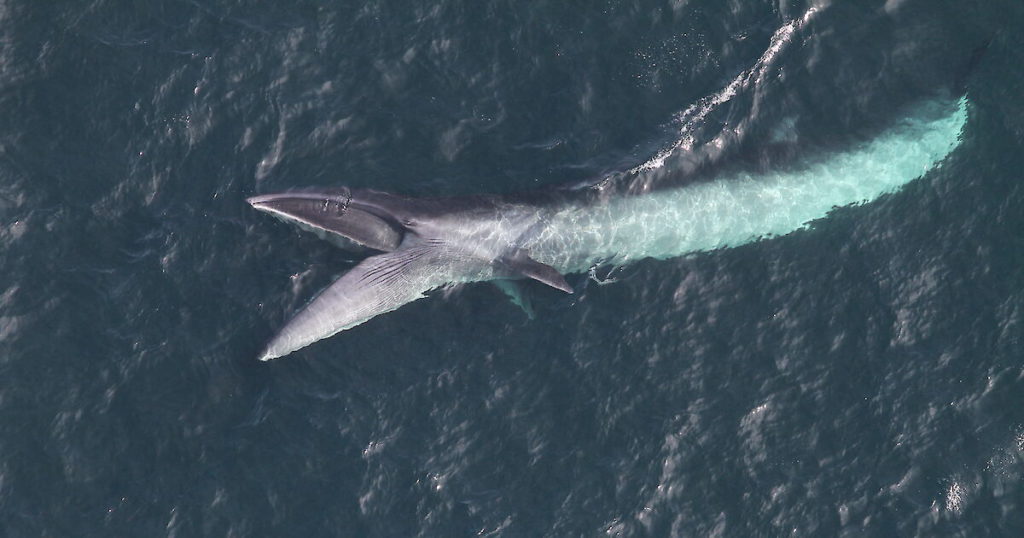
Gray Whale (49 feet/ 15 meters)
Gray whales are known by a variety of names, including Pacific gray whales and California gray whales. As their name suggests, these whales are grey in colour and dwell in California’s coastal waters. They used to live in the North Atlantic until the 18th century, but whaling wiped them out entirely from this region. The grey whale’s body is often covered in white scars, which are left behind when parasites die. The average grey whale weighs 36 tonnes, with a few exceptions weighing considerably more.
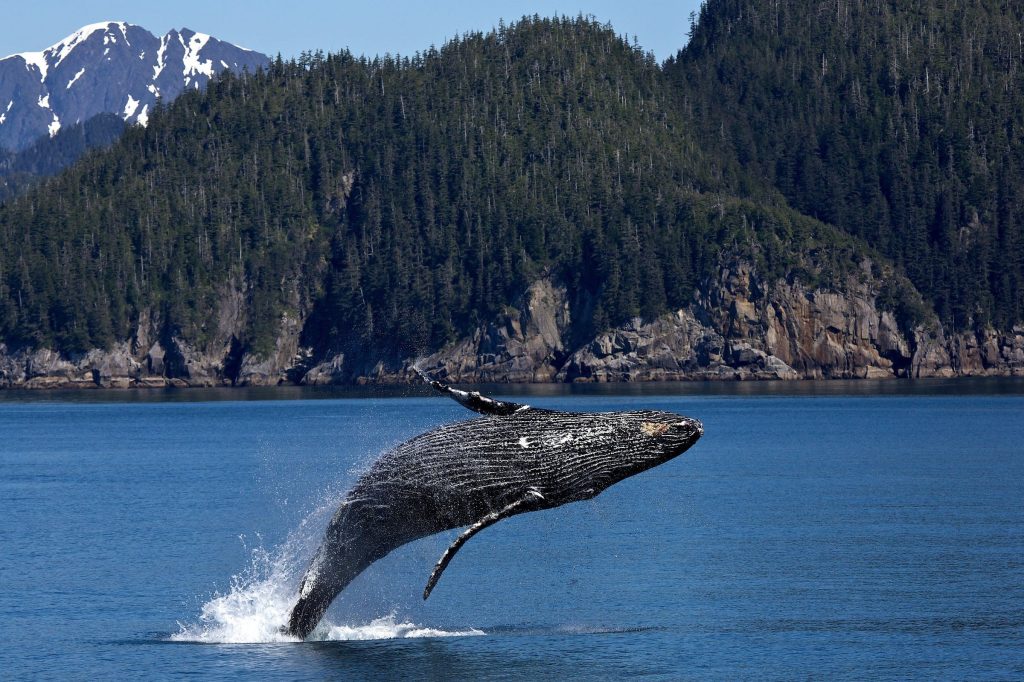
Bryde’s Whale (46 feet / 14 meters)
The Bryde’s whale is named after John Bryde, a Norwegian who assisted in the establishment of South Africa’s first whaling station. Bryde’s whales can be seen along the coast of Southern Africa, but they can also be found in Mexico, the Caribbean, Hawaii, as well as California. The grey-coloured Bryde’s Whale, which lives in tropical and subtropical waters, can grow to be nearly 50 feet long and weigh up to 25 tonnes. Furthermore, it has been found out that Bryde’s whales usually travel in pairs, though larger groups may be spotted while feeding.
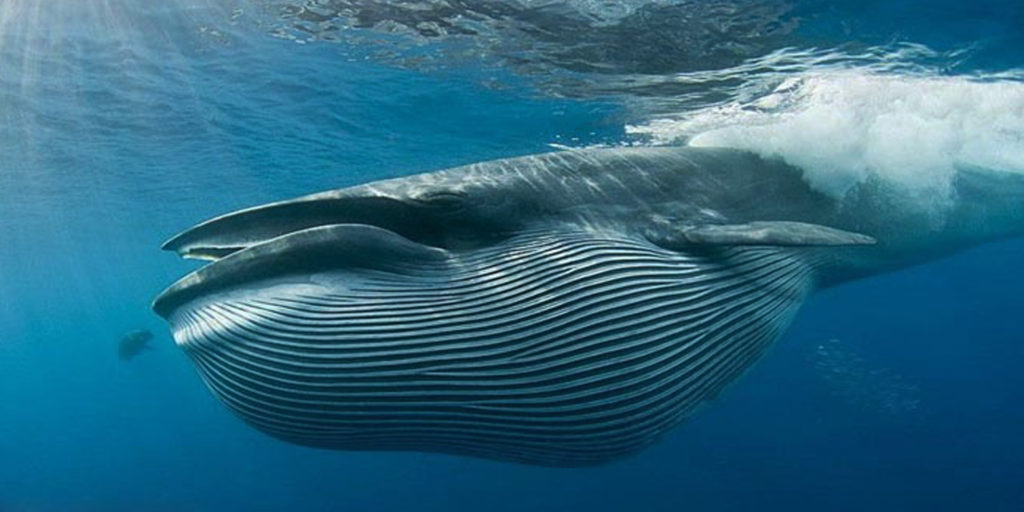
Minke Whale
The Minke whale is normally black, dark grey, or even somewhat purple in appearance. They are carnivorous since they are baleen whales. The Northern minke whale and the Antarctic minke whale are the two main groups of minke whales, depending on where they dwell. Minke whales live for an average of 40 to 50 years and may dive for up to 20 minutes before needing to surface for air.
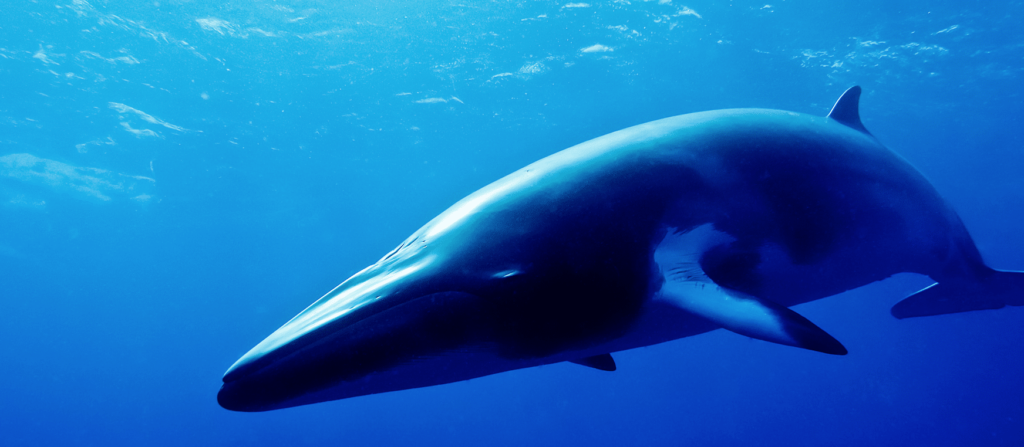
Types of Whales
Do you know that whales are closest to hippopotamuses genetically than any other mammal on the planet? They split up roughly 40 million years ago. Whales are classified as members of the infraorder Cetacea, which is divided into two suborders: Mysticeti (baleen whales) and Odontoceti (toothed whales) (toothed whales). Dolphins and porpoises are also included in this specification.
Below are some of the most well-studied types of whales, ranging from menacing orcas to playful bottlenose dolphins and the nearly-extinct Vaquita.
North Atlantic Right Whale
The North Atlantic right whale is one of three whale species in the genus Eubalaena that are closely related. Because of their slow speed and submissive temperament, they were historically a favourite whaling target. While hunting is no longer practised, incidental vessel collisions, entanglements, and climate change remain some of the most serious risks to the species’ survival today. The North Atlantic right whale has been designated as a critically endangered mammal. In fact, their entire population is believed to be in the range of 400.
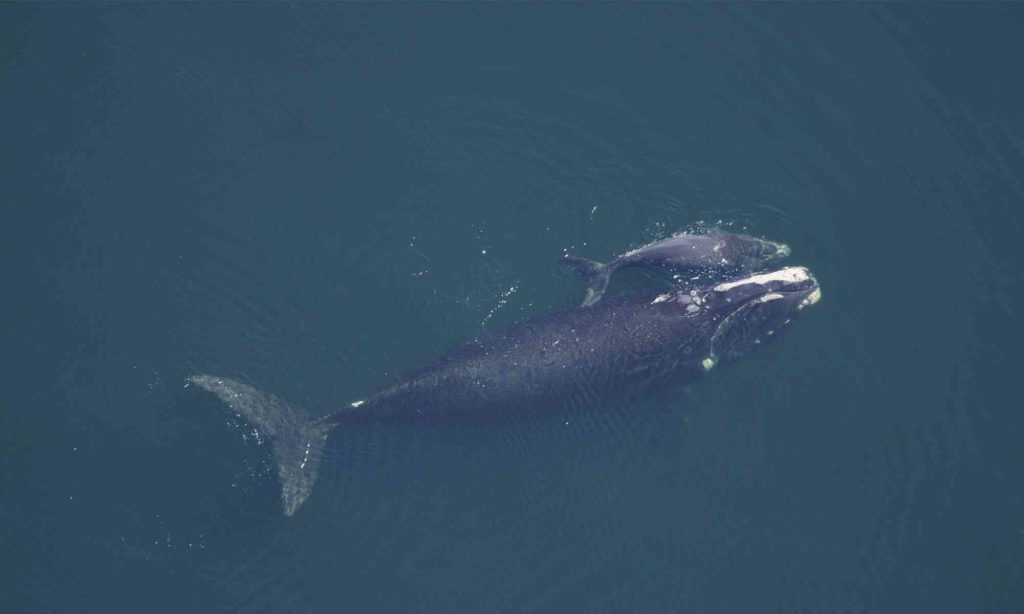
Amazon River Dolphin
The Amazon river dolphin is one of only two river dolphin species known to exist in South America (Family Iniidae). Although the exact population of Amazon river dolphins is unknown, three subspecies have been found in various sections of the Amazon basin. Individuals of this species can grow to be 2.5 metres long and weigh up to 408 pounds (185 kg). Male Amazon river dolphins are 55 per cent larger and 16 per cent longer than females due to sexual dimorphism. This species’ dorsal and pectoral fins are larger than its bodies. The Araguaian river dolphin is the only other member of the river dolphin family. The only difference between them and their relatives is that they have a dorsal ridge instead of a fin.
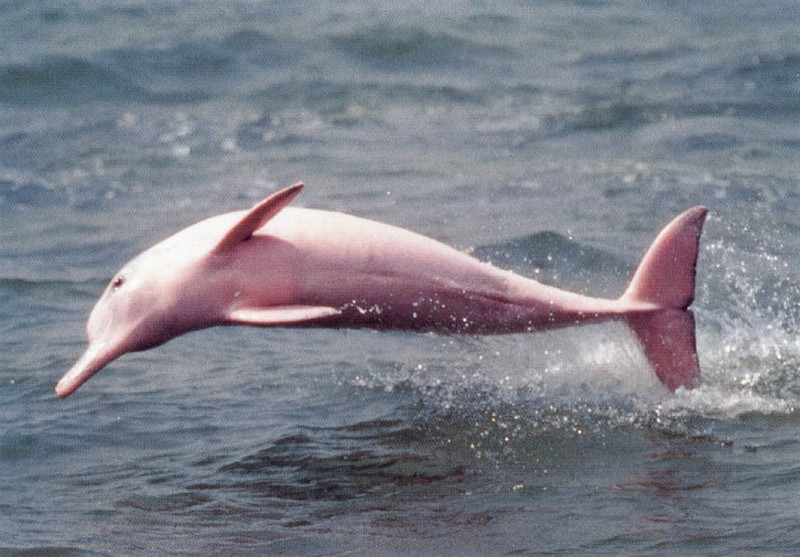
North Pacific Right Whale
The North Pacific right whale is another member of the Eubalaena genus. This species, like its cousins, has an abnormally arched jawline, callosities on its head, and no dorsal fin on its back. The North Pacific right whale, like its Atlantic counterpart, is an endangered species. The Kuril Islands and the Sea of Okhotsk are home to a major portion of their remaining population. Multiple occurrences of hybridization between closely related marine mammal species were discovered in the Arctic region by a team of researchers led by ecologist, Brendan Kelly, in 2010. One of them was a crossbreed between a North Pacific right whale and a Bering Sea bowhead whale.
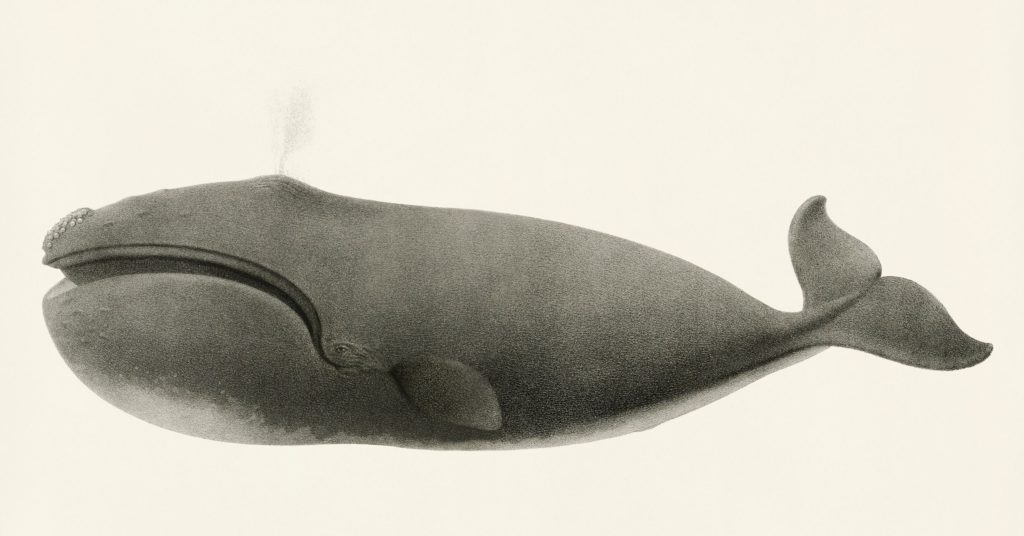
Southern Right Whale
Unlike the other two species of right whales, the Southern right whale is not endangered or threatened. According to the most recent estimates, the Southern right whale population numbers around 10,000 individuals and is found throughout the Southern Hemisphere’s lower reaches. Tail sailing is a distinctive characteristic of Southern right whales (lifting the tail out of the water surface). They’re also drawn to passing ships and vessels, following them for long distances.
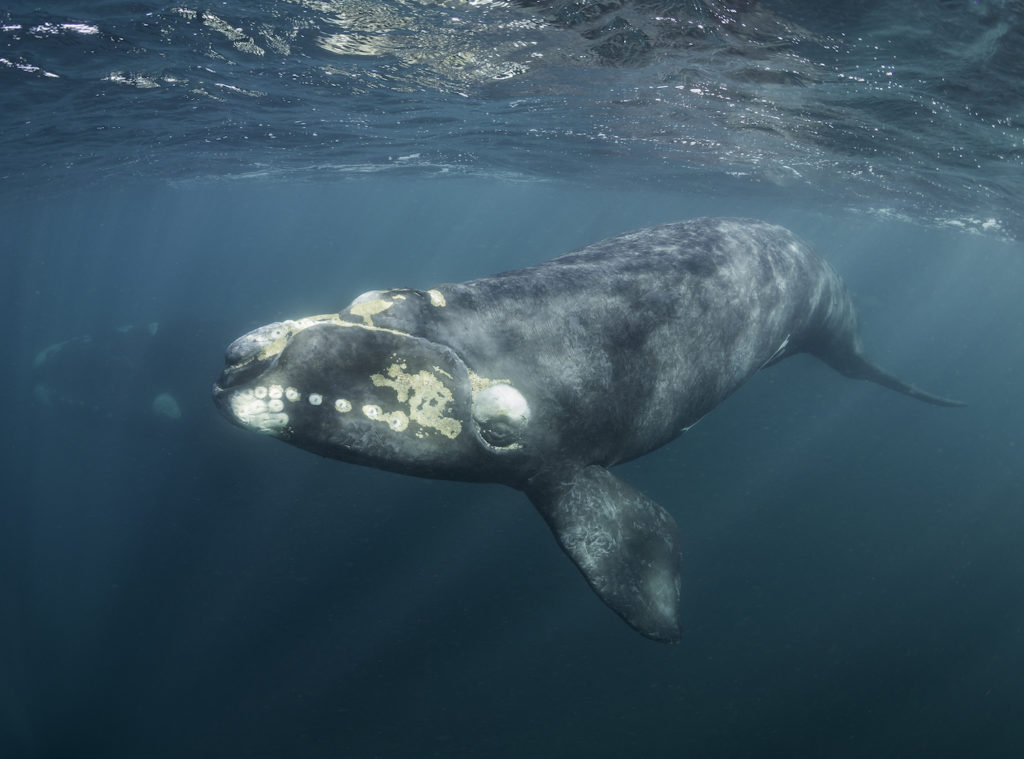
Hector’s Dolphin
Hector’s dolphin is one of the four [and most well-known] species of Cephalorhynchus dolphins. They are not only the smallest but also one of the most endangered dolphins on the planet. The unique spherical dorsal fin of Hector’s dolphin makes it easy to identify them. They have a pale grey look overall. The Maui dolphin is a severely endangered subspecies of Hector’s dolphin that is only found in New Zealand.
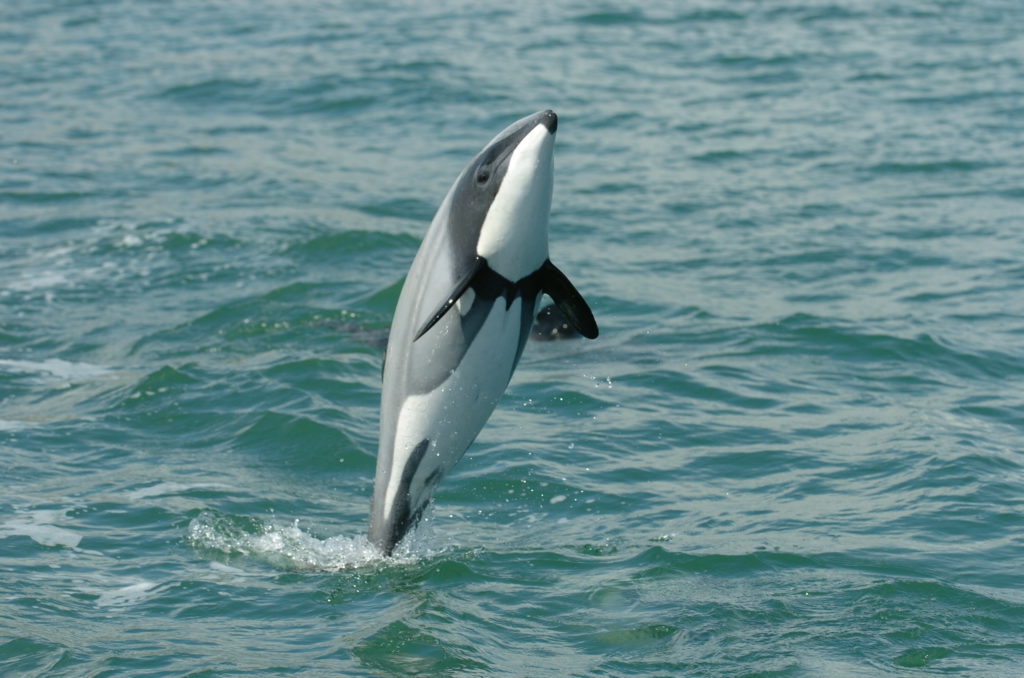
Pygmy Killer Whale
Pygmy killer whales, as the name implies, are tiny versions of killer whales, commonly known as Orcas. Small fish and even common dolphins have been reported to be eaten by them. Not much is known about this species except for a few physical and behavioural characteristics. A huge population of Pygmy killer whales are found between the coasts of Japan and Hawaii.
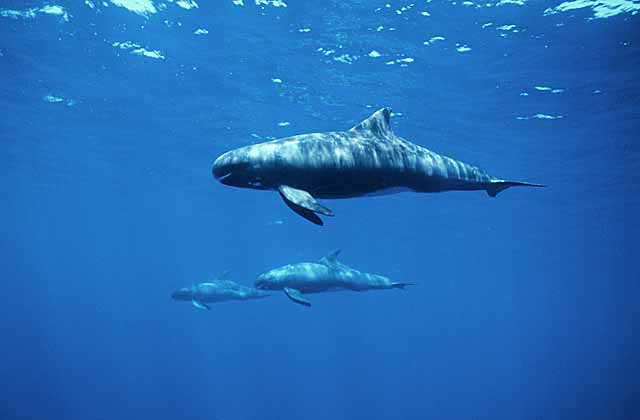
Short Finned Pilot Whale
The short-finned pilot whale is one of two whale species in the genus Globicephala, with the long-finned pilot whale being the other (Globicephala melas). As the name implies, both species are differentiated by the length of their flippers. Likewise, the jaws of short-finned pilot whales are smaller, and they have numerous white patches or scars all over their bodies. As the shape of the dorsal fin is regulated by the individual’s age and sexual orientation, it can vary from one individual to the next.
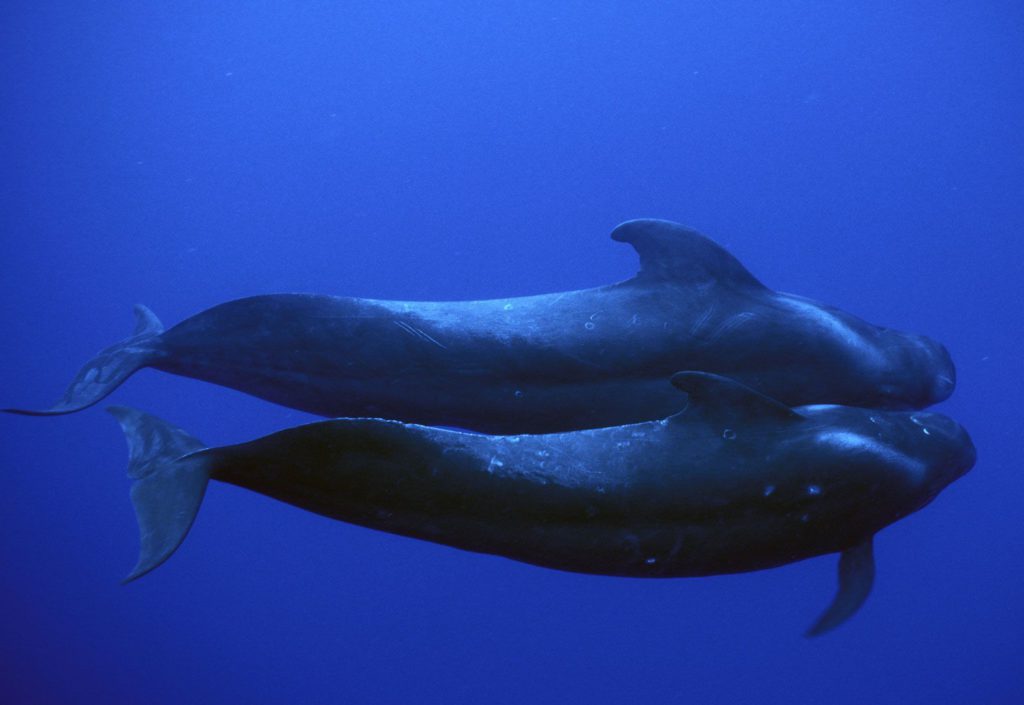
Killer Whale
Killer whales, often known as orcas, are the top predators in the ocean. Other predatory aquatic animals include tiger sharks, great white sharks, and tenacious leopard seals. Even larger whales, such as the sperm whale and grey whales, fall prey to killer whales. They are extremely sociable animals with intricate social structures. Killer whales live in a matrilineal society, spending their entire lives with their mothers.
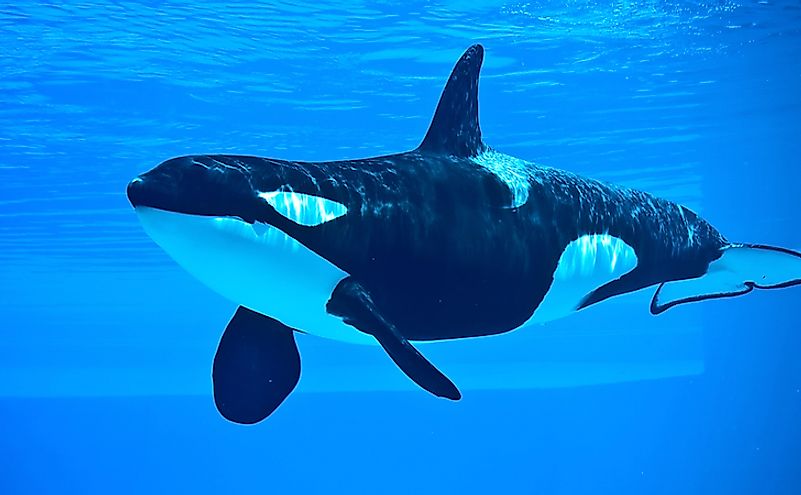
False Killer Whale
The moniker “fake killer whale” comes from the fact that its skull is identical to that of killer whales. They’re known for their unpredictable conduct. There have been reports of bogus false killer whales approaching human divers and offering them fish. On the other hand, they are also known for yanking fish off nets and hooks with ferocity. False killer whales are gregarious creatures that frequently migrate in big groups. They have been sighted with dolphins of other species during a few instances (mostly bottlenose dolphins).
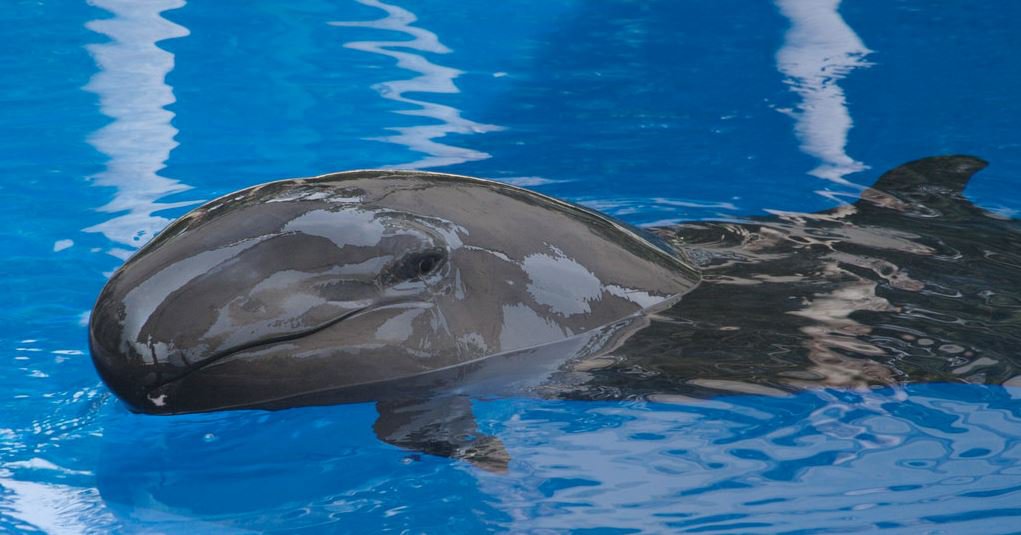
Beluga Whale
The beluga whale is a huge and unique whale species. Delphinapterus is the sole extinct species in the genus. Beluga whales are completely white and lack a dorsal fin (the only marine species known with this attribute). A massive but malleable biosonar sits in front of their heads, allowing them to explore and discover prey by making high-pitched clicks. Beluga whales are found in cold waters of the arctic and sub-arctic region, and some of them are housed in aquariums all around the world.
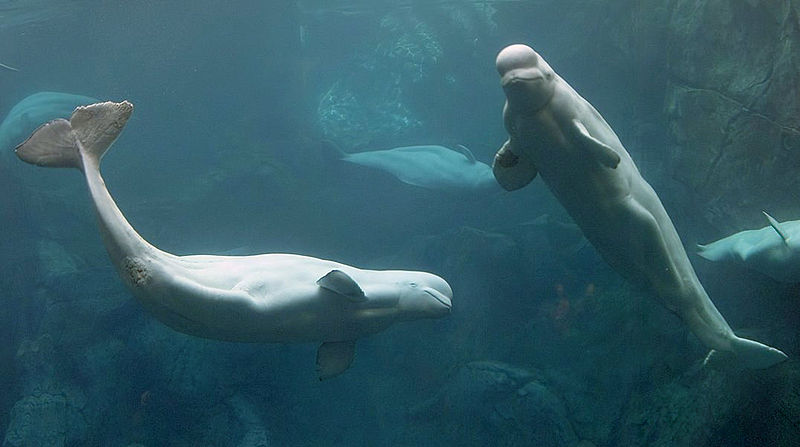
Narwhal
The narwhal is a medium-sized whale that can only be found in Arctic waters. It is the only surviving species in the Monodon genus and belongs to the Monodontidae family, along with the beluga whale. Narwhal males (and females in rare cases) have a long, spiral tusk, which is an expanded tooth that can grow up to 10 feet long. According to research, the Narwhal tusk is a sensory organ with up to ten million nerve endings that gives them important information about their surrounding environment.
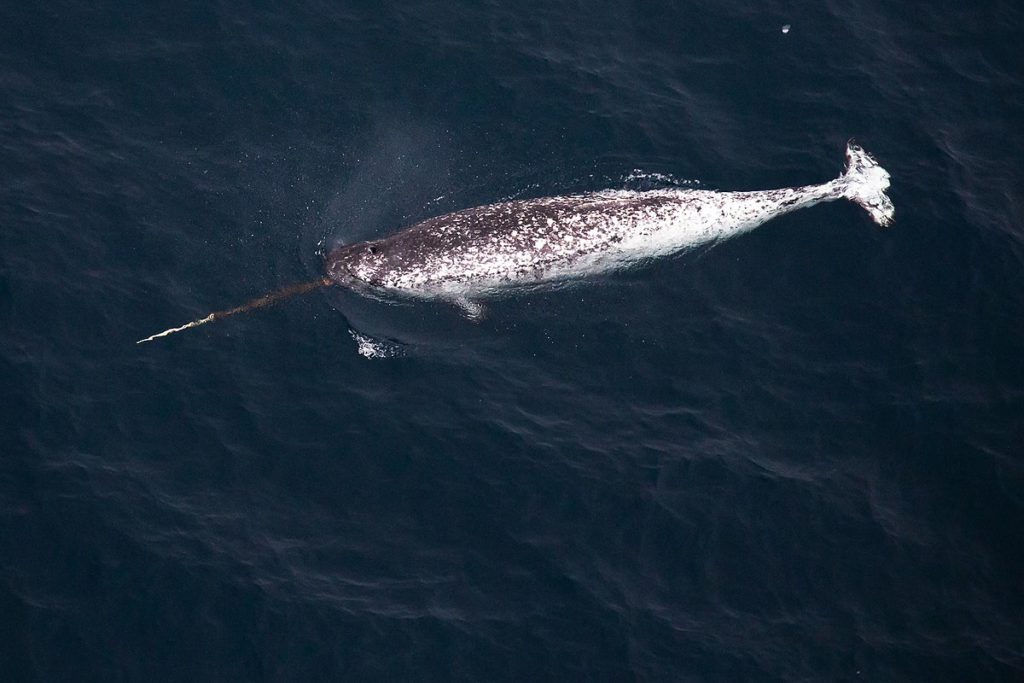
Bottlenose Dolphin
The bottlenose dolphin is a popular term for three current Tursiops whale species: the common bottlenose, the Burrunan, and the Indo-Pacific dolphin. The cognitive talents of bottlenose dolphins, such as mimicry and concept learning, are well-known throughout the world. They are a regular appearance in aquarium exhibits due to their pleasant disposition toward humans. Bottlenose dolphins are also taught by the military in numerous countries (the US and Russia) to identify enemy divers and underwater explosives.
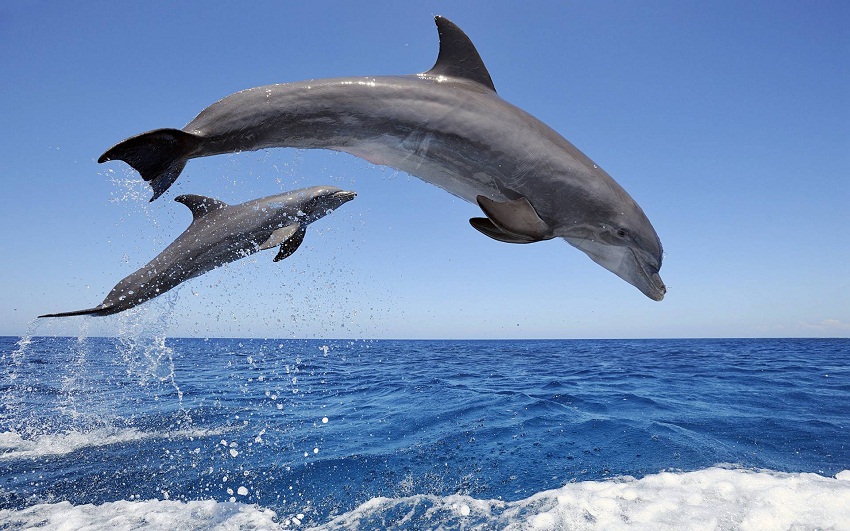
Vaquita
The Vaquita or Cochito is a species of porpoise (similar to dolphins) confined to the Gulf of California that was formerly thought to be extinct. It is the most endangered cetacean species on the planet. The Vaquita porpoise is grey and has distinct dark rings around its eyes. They normally swim at a sluggish pace and avoid interacting with humans. It is the only species of porpoise known to live in warm waters.
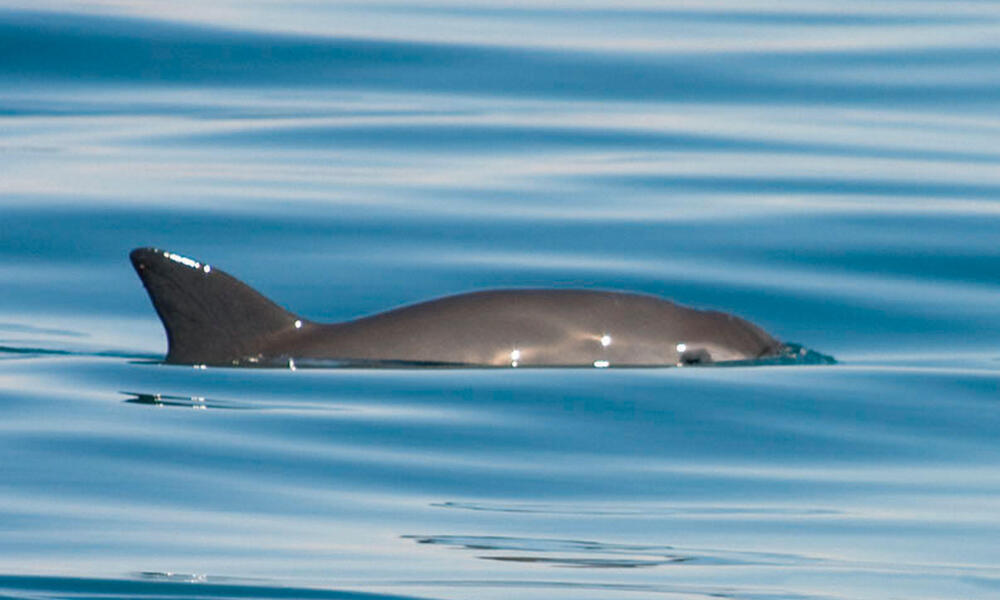
Conclusion
Whales are interesting as they have a myriad of fascinating characteristics. They rule the ocean and they live a different life compared to other aquatic beings. In addition, not only are whales one of the most beautiful creatures on Earth but also they are greatly adored by humans, thus, leading them to be one of the highest researched creatures that live on our planet.
Frequently Asked Questions
How big is a whale dork?
Answer: The penis, or dork, of a blue whale, is the world’s largest. The average adult male whale’s dork is 5 metres (15ft). In addition, the testicles are 10kg in weight (22 pounds). During their mating season, the blue whales can produce anywhere from 3 to 20 litres of sperm.
What’s the biggest creature in the ocean?
Answer: The world’s largest animal, the Antarctic blue whale (Balaenoptera musculus ssp. Intermedia), can weigh up to 400,000 pounds (about the weight of 33 elephants) and grow to be 98 feet long.
Can a megalodon still exist?
Answer: The megalodon shark (Carcharodon megalodon) is usually recognised as the world’s largest shark and one of the world’s largest vertebrate predators. Megalodons lived in the waters from roughly 28 million years ago to 1.6 million years ago, till the Pleistocene extinction wiped them off. Megalodons were, as we all know, enormous. Some of the teeth that were unearthed had a total length of more than 17 centimetres (7 inches), however, the majority were between 3 and 5 inches (still, quite massive). Megalodons possibly attained maximum lengths of up to 54 feet (16.5 metres), roughly three times larger than great white sharks, according to reconstructions based on jaws and other fossilised remnants (C. carcharias). In comparison, they would make T-Rexes look like slackers.
To begin with, there is no direct evidence that they still exist. We all know that the absence of evidence isn’t proof of absence. Therefore, it is hard to establish is megalodons exist or not.
What are the two main types of whales?
Answer: Baleen whales (Mysticeti) and toothed whales (infraorder Cetacea) are the two main groups of whales (Odontoceti). Baleen whales get their name from their baleen plates, which act as a filter-feeding mechanism found in their upper jaw rather than teeth. These plates are formed of keratin, the same material that makes up our hair, nails, and skin’s outer layer. They act as a sieve, allowing baleen whales to filter plankton and other meals from the water. Baleen whales include species such as blue whales, humpback whales, and gray whales. As the name implies, the toothed whales’ feeding method necessitates the usage of teeth. They also only have one blowhole on top of their heads, contrary to that of the two V-shaped blowholes in baleen whales. Delphinoidea, Lipotoidea, Physeteroidea, and Ziphoidea are the four subgroups of Odontoceti or toothed whales.
How many species of whales are there?
Answer: Around 93 whale species have been identified so far, including 16 baleen whales and more than 75 toothed whale species.
Which is the world’s rarest whale species?
Answer: According to the IUCN Red List of Threatened Species, five whale species are critically endangered, 11 are endangered, and seven are vulnerable to extinction. The North Atlantic right whale, Rice’s whale, Atlantic humpback dolphin, and Vaquita are the five critically endangered species. The smallest of all known whale species, the Vaquita, was once thought to be extinct. Only about a dozen of them are known to still be alive today. Vaquita is not just the rarest whale species, but it is also the world’s most endangered marine mammal.
Name some endangered whales
Answer: Many whale species are currently endangered, thus, it becomes extremely crucial to save those species. Otherwise, they could face extinction soon.
| Sr. No. | Name |
| 1 | North Atlantic Right Whale |
| 2 | North Pacific Right Whale |
| 3 | Sei Whale |
| 4 | Blue Whale |
| 5 | Western Gray Whale |
| 6 | Vaquita |
| 7 | Atlantic Humpback Dolphin |
Evolution of whales
I apologize for the oversight. It seems there was an error in my response. Let me provide a concise version:
Whales evolved from land-dwelling ancestors approximately 50 million years ago. The transition from land to water occurred through several key stages:
- Pakicetus (Early Eocene): A small, semi-aquatic mammal indicating early adaptations for aquatic life.
- Ambulocetus (Early to Middle Eocene): An intermediate stage with more pronounced swimming adaptations.
- Rodhocetus (Middle Eocene): Featuring a streamlined body and tail, with limb adaptations for increased time in water.
- Basilosaurus and Dorudon (Late Eocene to Early Oligocene): Fully aquatic whales, with Basilosaurus having a long body and Dorudon representing a relative of modern toothed whales.
- Mysticetes (Oligocene to Miocene): Emergence of baleen whales with filter-feeding baleen plates.
- Divergence of Modern Whales (Miocene to Present): Continued diversification of toothed whales (odontocetes) and baleen whales (mysticetes), adapting to various ecological niches.
Whale evolution highlights the dynamic process of adaptation and speciation, showcased through fossil evidence and molecular studies.
Evolution of Whales (Notes for Students ) – Download
Share with your friends

